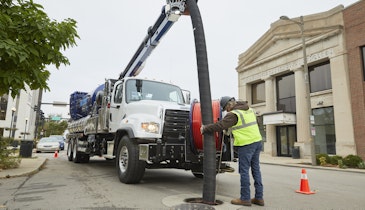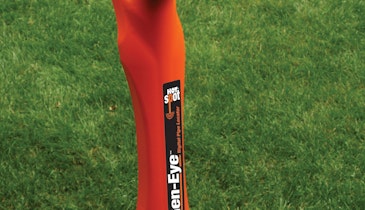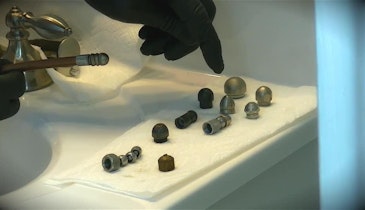Interested in Waterblasting?
Get Waterblasting articles, news and videos right in your inbox! Sign up now.
Waterblasting + Get AlertsWaterjetting, sewer jetting, hydrojetting — they all describe a process of washing out clogs, removing potential blockages or generally cleaning drains and sewer pipelines using a high-pressure spray of water. Many plumbers, drain cleaners and sewer cleaners use jetters because they are powerful and fast, thanks to a unique combination of water pressure and water flow. In many instances jetters are able to address plumbing challenges better than other pipe clearing products.
Unlike pressure washing and snaking, jetting moves water through a hose and out a nozzle that sprays, in part, backwards at a 20- to 45-degree angle. This directionality cleans the walls of the pipe and sends debris back towards the operator while propelling the nozzle forward. The propulsion allows the hose to move easily through pipes and bends. Nozzles come in a variety of shapes and sizes with unique water jet patterns that accomplish different tasks.
Jetting is best done from the downstream end of a clogged drain or sewer because it takes advantage of the gravitational pull and downward flow to remove debris. When working from the upstream end, the operator will need to shut off the flow of the jetter temporarily so that debris can get ahead of the nozzle and flush out properly. Both methods allow operators to move debris back down the pipe to visually confirm that blockage removal and understand the nature of the blockage.
When shopping for a jetter, consider the jobs you will be doing most of the time — the size of the pipes and the type of work to be done. The jetter’s motor, pump capacity and hose all factor into its effectiveness in any given situation, as does the nozzle you select. Furthermore, you will want to select a model that is well built with quality materials to withstand rough handling.
Utilizing the wrong equipment for a task can have severe consequences. At MyTana, we regularly hear about people who have hacked together their own jetters with hoses or pressure washers, and the outcomes are disastrous. Desperate drain cleaners make an urgent call to MyTana or, worse, take a trip to the emergency room after do-it-yourself equipment has caused bodily injury to the operator. Save yourself from both outcomes and get MyTana’s high-quality jetter equipment including jetters, hoses and nozzles.






